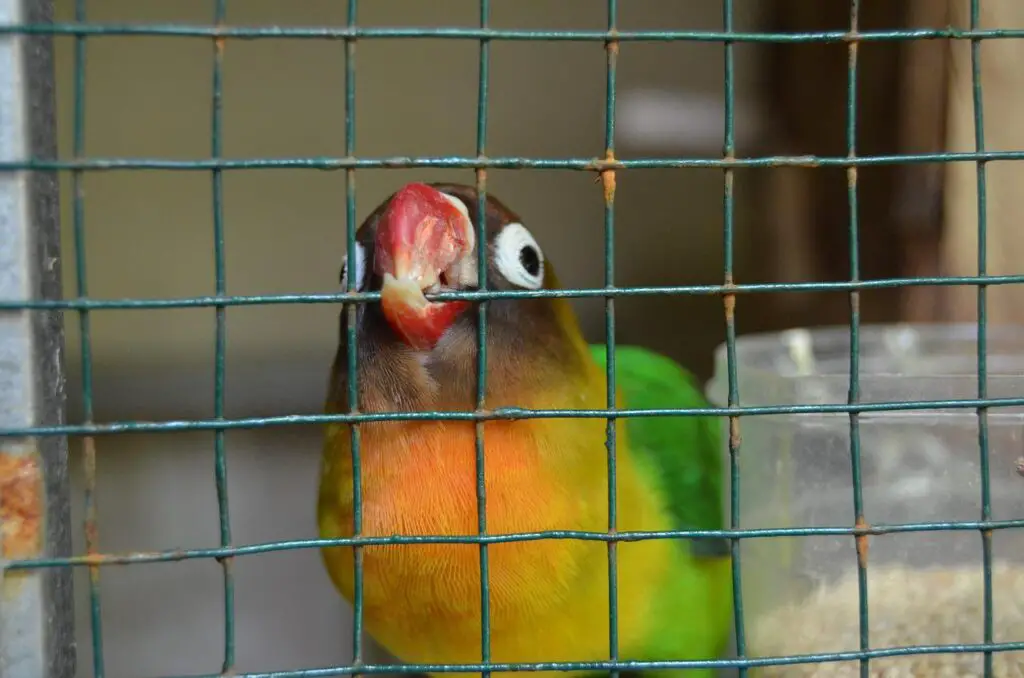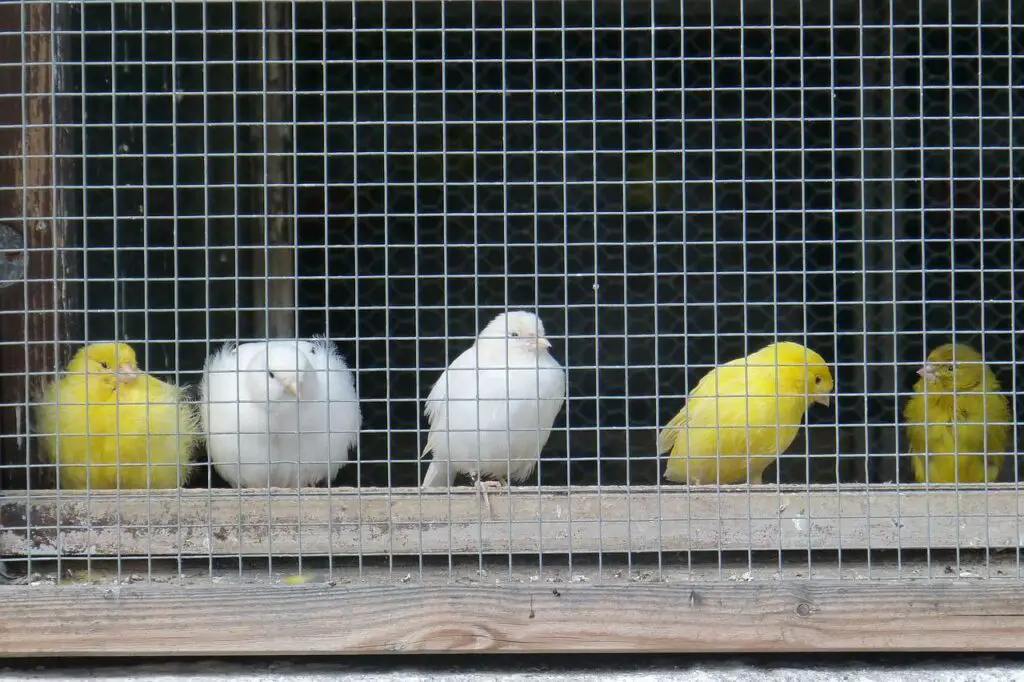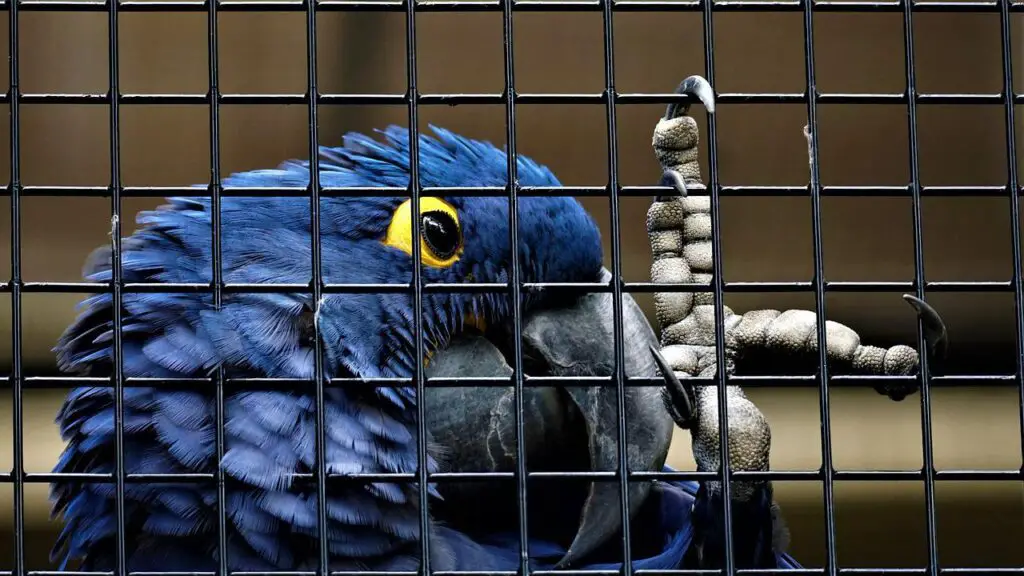Have you ever thought about the safety of your pet birds? What kinds of wires are safe for them to be around? It’s important to know what types of wires are hazardous and which are not so that our feathered friends can stay healthy and happy. This article will discuss the different types of wire and their effects on birds to help keep them safe.
It’s no secret that birds love flying freely from room to room, it’s a natural instinct! Unfortunately, this often means they come into contact with wires or cords that may not be suitable for their delicate bodies. Knowing which kind of wire is safest for your beloved avian companion can ensure they remain unharmed while engaging in their favorite activity.
No one wants to see any harm to these precious creatures, but sometimes we don’t realize how dangerous certain wiring materials can be until it’s too late. By understanding which type of wire is best suited for bird cages and other areas where they might play, we can provide them with a safer environment and peace of mind. Read on to learn more about the varieties available and what makes each special!
Overview Of Bird-Safe Wiring
Like a shining beacon of safety in the night, bird-safe wiring is essential for keeping our feathered friends safe. Its strong core and outer insulation act as a barrier to prevent electric shock while providing the necessary power to keep homes running smoothly.
As we explore this important topic further, let’s look at the different types of wiring that can be used to ensure birds are not at risk. Depending on the area where you live and what type of environment your birds will be living in, specific wires are available that provide optimal levels of protection.
For example, PVC-coated or solid-core aluminum building wire are two options for residential areas with high concentrations of wildlife.
In addition, specialized bird-specific wires such as “bird wire” can also be used to help ensure maximum safety when dealing with higher voltages or commercial applications.
No matter what kind of wire you choose for your particular needs, one thing is certain: it must meet all relevant safety regulations and standards to protect birds from potential harm. By doing so, you’ll have peace of mind knowing that these creatures will remain free from danger – allowing them to continue bringing joy into our lives with their sweet songs and beautiful feathers!

Types Of Bird-Safe Wiring
When it comes to wiring, safety is of the utmost importance. Not only for us humans but also for our feathered friends! Birds can get caught in standard wires and other materials, so if you’re looking to keep them safe while they take flight around their habitat, bird-safe wiring is a must. In this article, we will discuss the types of wiring that are best suited for keeping birds safe and comfortable.
The first type of bird-safe wiring is flexible wire mesh or netting. This material allows birds to easily pass through without getting stuck (or worse). It’s lightweight yet durable enough to withstand any potential damage from gnawing animals or harsh weather conditions. Additionally, it won’t obstruct your view like traditional fencing would.
Another option when it comes to bird-friendly wiring is plastic-coated cable ties. These come in various lengths and sizes and offer an easy way to secure objects together with minimal risk of entanglement or injury for our avian companions. Plus, they don’t corrode over time like metal ties might and are much easier on the eyes than plain old rope or twine!
No matter what kind of wiring you choose, whether it’s mesh or cable ties, always make sure that it’s firmly fixed into place with no sharp edges exposed, which could cause harm to your beloved birds. With these tips in mind, you’ll be well on your way toward creating a safe environment for all forms of wildlife!

Benefits Of Bird-Safe Wiring
Using bird-safe wiring is an incredibly important step for keeping our feathered friends safe and healthy. This type of wire helps to protect birds from harm and provides several other benefits as well. Let’s take a closer look at some advantages of using this kind of electrical wiring in your home or business.
One benefit of bird-safe wiring is that it can help prevent fires. Since these wires are designed to be more durable, they don’t deteriorate as quickly as regular types of electrical wiring. This means there will be fewer chances for sparks and short circuits, which could lead to dangerous fires if left unchecked. Additionally, installing bird-proof insulation around exposed wires can provide extra protection against potential fire hazards inside your home or business.
Another advantage is peace of mind knowing you’re doing your part to keep our avian friends safe and sound. Bird-safe wiring ensures that no unwanted visitors get hurt while exploring your property. It can even help discourage them from entering in the first place due to its thicker insulation material. With this kind of wiring, you can feel confident that any birds who may have accidentally wandered onto your land are kept safe from danger without having to worry about their safety every day.
Bird-safe wiring offers several meaningful benefits for homeowners and businesses alike, it creates a safer environment for birds and helps reduce the risk of fire damage on properties. Installing this type of wire isn’t difficult either; all it takes is a bit of research into what materials work best for each application, so why wait? Get started today and ensure you’re doing everything possible to keep our beloved birds out of harm’s way!
Safety Tips For Installing Bird-Safe Wiring
Installing bird-safe wiring is vital for protecting our feathered friends. There are a few key safety tips to keep in mind when doing so, and once you’ve got them down pat, you can be sure that your birds will be safe from harm. Here’s what you need to know:
• Make sure the wire insulation is thick enough and won’t degrade over time.
• Check for stray voltage and make sure it’s not too high before installing.
• Insulate any exposed parts of the wire with weatherproof material or other protective covering.
• Use eyelets instead of staples to attach the wire securely without piercing it through the insulation.
• Choose wires made with copper, aluminum, steel, or other approved materials.
Following these steps when installing bird-safe wiring will ensure that no harm comes to our avian neighbors. Plus, if they land in an unsafe spot while exploring their environment, they’ll have a much better chance of staying safe! So let’s all take responsibility and ensure we use only bird-safe wiring wherever possible, our feathered friends will thank us later!

Troubleshooting Bird-Safe Wiring Issues
Did you know that birds are electrocuted by power lines every year? This is a shocking statistic and one of the reasons why bird-safe wiring has become increasingly important. To ensure the safety of our feathered friends, it’s essential to understand how to troubleshoot any potential issues with this type of wiring.
When dealing with bird-safe wiring, there are several factors to consider. Most importantly, make sure that your home’s electrical system meets the necessary standards and requirements, both local and federal regulations should be adhered to guarantee safety. Additionally, checking whether all components have been correctly installed is key; wires should never touch each other or come into contact with trees or shrubs. Regular maintenance checkups can also help identify potential problems before they become serious hazards.
If an issue does arise, contact a qualified electrician immediately. Make sure they’re familiar with Bird-Safe Building Guidelines so they can properly diagnose the root cause of any problem quickly and efficiently without putting birds in danger. With these tips in mind, you can rest assured that your home’s wiring won’t harm our avian friends! TIP: It might be helpful to create a checklist when installing bird-safe wiring, this way, you can ensure all steps have been followed correctly from start to finish!
Conclusion
In conclusion, bird-safe wiring is an important factor to consider when installing any electrical system. It ensures that birds are kept safe and away from potentially dangerous situations. With the right types of wire and proper installation techniques, you can ensure your feathered friends remain healthy and happy.
The benefits of bird-safe wiring are numerous: it provides a safer environment for birds and reduces the risk of injury or death due to electrocution. Additionally, it extends the life of wires by avoiding corrosion caused by moisture exposure. Finally, bird-safe wiring helps protect our environment by reducing the risks associated with toxic materials used in traditional wiring systems.
Overall, there’s no better way to keep birds safe than investing in bird-safe wiring. Not only will this help keep them safe from potential harm, but it’ll also reduce costs related to damage repair over time. I hope this article has provided enough information on bird-safe wiring so that you can make an informed decision when considering which type of wire best suits your needs!
